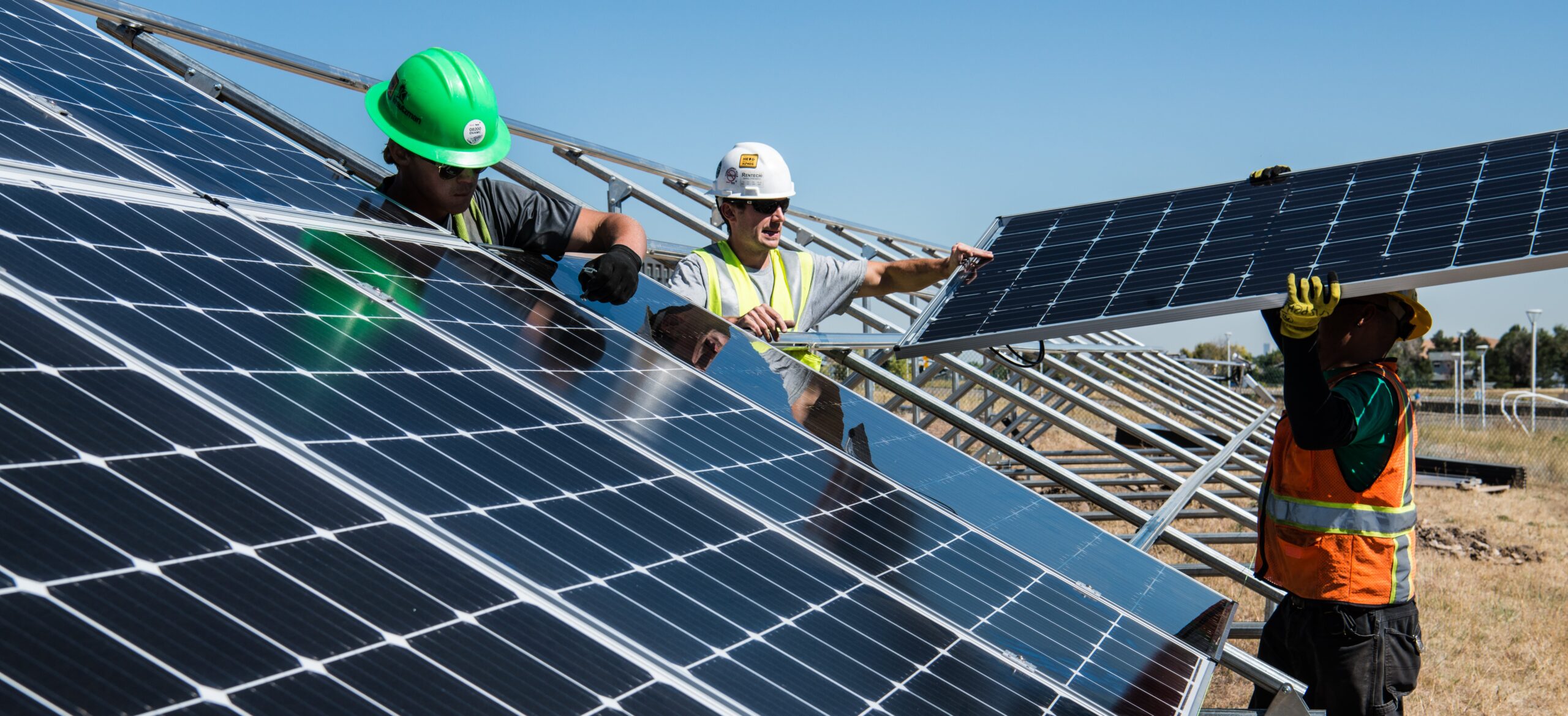It’s a pivotal time in the American job market. Renewable energy is in the news every day (California to phase out gasoline-powered cars! Amazon invests in new climate technologies! ) and there are now more Americans who call themselves clean energy workers than ever before. The economic tide is turning toward renewable energy, with Goldman Sachs predicting that 25 percent of all energy spending will target clean energy in 2021 and that the annual investment in renewable infrastructure will total $16 trillion by 2030. That’s right, 16 trillion.
Employment in the renewable energy field is, simply put, the future. As of 2019, it employed nearly 2.5 million workers, with enormous growth set over the next decade. It’s a job field that expands regularly, and millions of Americans across an array of occupations are qualified to work within it. It is booming like no other industry across the world. The job growth is even exceeding all expert predictions: more than 24 million new jobs are expected in the next decade.
So, what is a clean energy worker? These are workers employed by solar, wind, and geothermal companies, or by the manufacturers of LED lighting and energy-efficient appliances. These are jobs in bio-fuel and hydropower, decarbonization, and bioenergy. It’s electricians, plumbers, welders, roofers, mechanical trade technicians, construction workers, salespeople, service techs, marketing professionals, managers, and mechanics. And they are all needed to keep the clean economy booming.Clean energy jobs are available in four main areas: energy efficiency, renewable energy, clean vehicles, and grid and storage.
Let’s Take a Look at Working in Renewable Energy:
Eleven million people worked in renewable energy across the world in 2018. This is a sector dominated by solar heating/cooling, wind energy, hydropower, liquid biofuels (which includes ethanol and biodiesel), and solar photovoltaic (a brand of solar power). The majority of jobs (43 percent) are in solar power, however solar is not the biggest or cheapest form of renewable energy, but it will be soon. There are major advances in making the sun’s energy storable, which will make solar utility-scale within a few years. In sunny states such as Florida, Texas, and the desert Southwest, solar pool and water heaters are already commonplace (across the world, such as in Israel, it’s already a standard way to heat everyone’s water).
These renewable sources are responsible for approximately 25 percent of the electricity generated across the globe. That number is steadily growing, and the number of employment opportunities is growing with it. The United States is among the top three nations in the world in total renewable energy jobs. In fact, the US added 300,000 new jobs to the energy sector last year, many in renewables. One particularly robust portion of the industry in the US is the offshore sector, where synergy with oil and gas is especially attractive. Hydropower is another area of surging growth. The International Energy Agency considers water the planet’s biggest source of renewable electricity. That area continues to grow with numerous jobs in operations and maintenance, as well as construction and installation.
Though there are countless types of jobs in renewable energy, here are the two most common:
The wind turbine technician is the single fastest-growing occupation in America. According to the Bureau of Labor Statistics, this trend is just a start – it’ll double again by 108 percent by 2024. The median salary is nearly $53,000 annually, with constant growth based on experience. Wind technicians build new wind turbines, but the majority of work is installing, maintaining, and troubleshooting them. For more information on job availability, visit energy.gov.
A solar photovoltaic installer is the third fastest-growing occupation in America, averaging $45,000 a year in salary. It’s estimated that one out of every 50 new jobs in America comes from solar. Jobs related to solar also cross many boundaries, including work in real estate and sales. But the bulk of employment lies in installers, who set up and maintain panels on rooftops nationwide. A background in construction, mechanics, or electrics is a great place to start for one of these jobs, which generally do not require a college degree. Official certifications in solar installation are available. Demand and compensation continue to rise in solar, making it a wise career choice for both new employees and those returning to the workforce. Many job listings can be found here.
There’s no doubt the number of jobs continues to expand in renewable energy. Some folks are even turning their land into wind farms, which often proves extraordinarily lucrative. As more and more Americans use clean energy, the job market responds with subsequent growth. It’s a great time to keep an eye on work with solar, wind, and other renewable energy companies.





